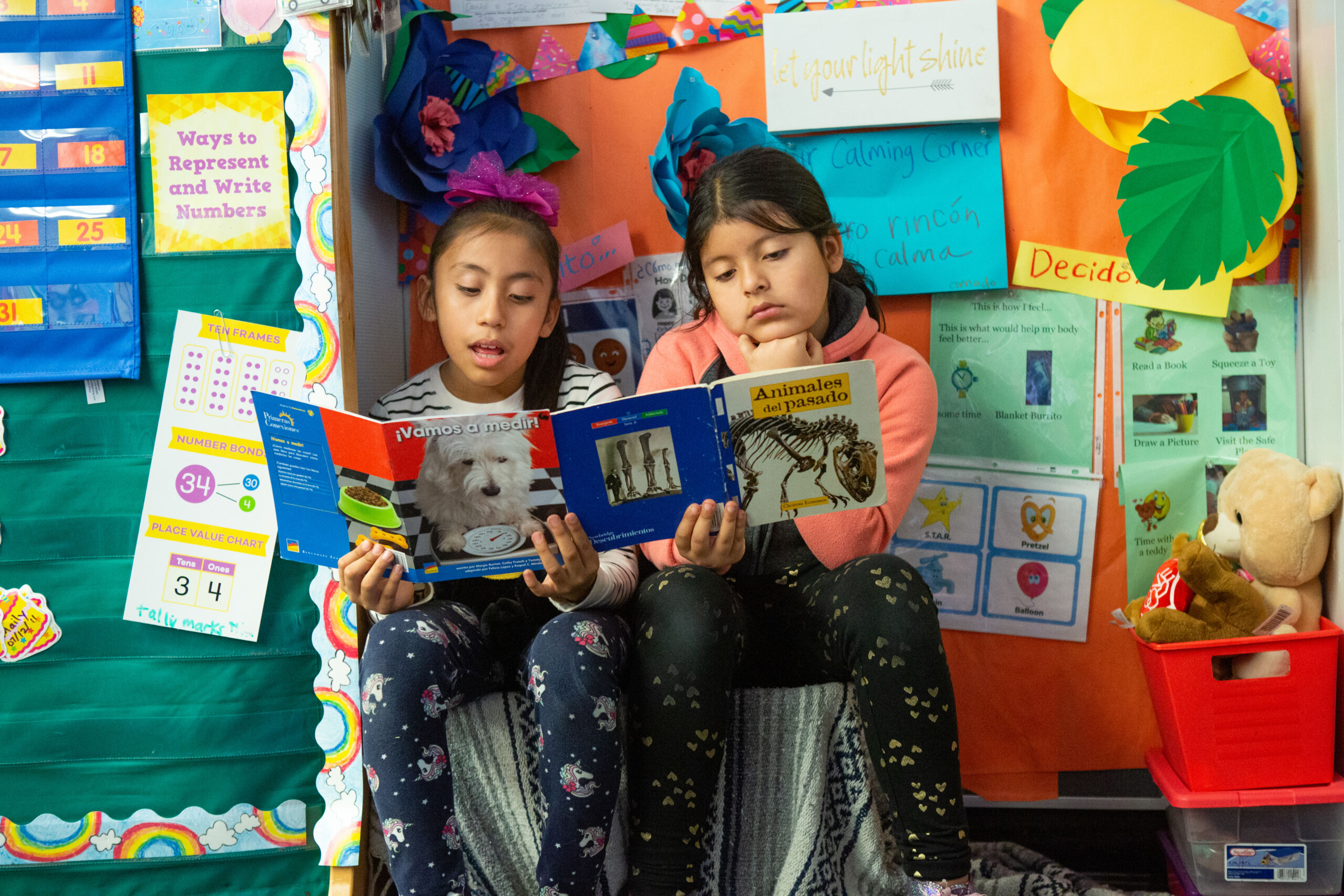As part of my transition from teaching preservice English education teachers to a Professional Learning Specialist at Keep Indiana Learning, I have spent the last several months immersed in the research and opinions surrounding the Science of Reading. There are many great resources to share, but the podcast Sold A Story is one source that deeply delves into the historical changes in reading instruction. I have also developed a six-part webinar series which covers the research-based tenets of the Science of Reading and offers resources for implementing these ideas in classrooms. My takeaway from studying this topic is that it is an exciting time to be a literacy educator as we explore ways to help all children read well.
“It is an exciting time to be a literacy educator as we explore ways to help all children read well.”

A definition of the Science of Reading, courtesy of Petscher et al.(2020) describes, “The ‘science of reading’ as a phrase representing the accumulated knowledge about reading, reading development, and best practices for reading instruction obtained by the use of the scientific method” (p. 268). In the 1980s and 1990s, researchers and practitioners debated how reading was best taught. You may have heard this referred to as The Reading Wars. In 2000, Congress asked The National Reading Panel to review all available reading research, around 100,000 studies. The National Reading Panel’s analysis made it clear that the best approach to reading instruction is one that incorporates the following:
- Explicit instruction in phonemic awareness
- Systematic phonics instruction
- Methods to improve fluency
- Ways to enhance comprehension
Many media reports about the science of reading focus on phonemic and phonics instruction. Yet, Alexander (2020) argues, “the reality is that reading does not begin or end with phonics or whole-word instruction (Seidenberg, 2013). It is far broader and more complex” (p. 89). The Science of Reading is a vast body of knowledge with many interpretations. Still, five research-based ideas have found their way to classrooms: phonemic awareness, phonics, vocabulary instruction, fluency, and comprehension. These five ideas comprise the Science of Reading; they work together and build on one another.

It is important to understand these skills are necessary for reading instruction. Still, it is also important for educators to understand what happens in the brain when someone learns to read. “Reading isn’t a natural brain activity — it’s a learned one” (Reading Changes a Child’s Brain: Here’s how). Our brains understand speech sounds by design, but we have to learn to convert letters into speech sounds. A leader in this field is Dr. Sanislas Dehaene, a cognitive neuroscientist who used MRI machines to study children’s brains as they learned to read. His book, Reading in the Brain: The New Science of How We Read, details his research and historical research detailing the way humans process language. Dr. Dehaene explains, “Advances in psychology and neuroscience over the last twenty years have begun to unravel the principles underlying the brain’s reading circuits. Modern brain imaging methods now reveal, in just a matter of minutes, the brain areas that activate when we decipher written words” (Dehaene, 2009, p.1). His research shows we first process the written word with our eyes. The historical reading research from Edmond Huey, who created eye-tracking software, helped scientists realize our eyes track every letter in a word, which means it is important for readers to decompose a word into its phonemes and eventually morphemes. Dr. Dehaene’s research reveals after words are visually processed, they report to our brain’s letterbox. “It (the letterbox) then transmits this information to two major sets of brain areas…that respectively encode sound pattern and meaning” (Dehaene, 2009, p. 53). The two paths are:
- “Infrequently used words and neologisms move along a phonological route that converts letter strings into speech sounds.”
- Called an orthographic filter
- “Frequently used words…are recognized via mental lexicon that allows us to access their identity and meaning” (Dehaene, 2009, p. 104).
- Called a semantic filter
Therefore, readers must know how to decode words using speech sounds. After we have decoded a word several times, a process called orthographic mapping, we learn these words as sight words.
“By teaching students to decode words, they can use these skills to decode and learn new words they encounter.”
Since neuroimaging research shows we break down words into sounds first, phonemic and phonological awareness are especially important in early elementary classrooms. The video “What Teachers Should Know About the Science of Reading” explains this phenomenon well; Emily Hanford breaks down these steps starting with how our brains recognize all letters, and eventually all sounds, in a word. Students understand the spoken word but must incorporate the visual word into their memory. They do this by processing the sounds in a word several times, with the goal of processing sounds (through both phonemic awareness and phonics) to achieve whole-word recognition. Due to this research, Science of Reading experts are shifting from a whole word, whole language, and cueing instruction to explicit and systematic phoneme and phonics instruction. By teaching students to decode words, they can use these skills to decode and learn new words they encounter. As an educator, we must understand how children learn to be good readers, but we must also consider student engagement and the artful teaching of reading. In my next blog post, I will review the five tenets of the science of reading and provide resources from researchers and teachers who effectively use the science of reading in their classrooms. In the meantime, please check out my webinar series for more information.



